Drapery Header Styles
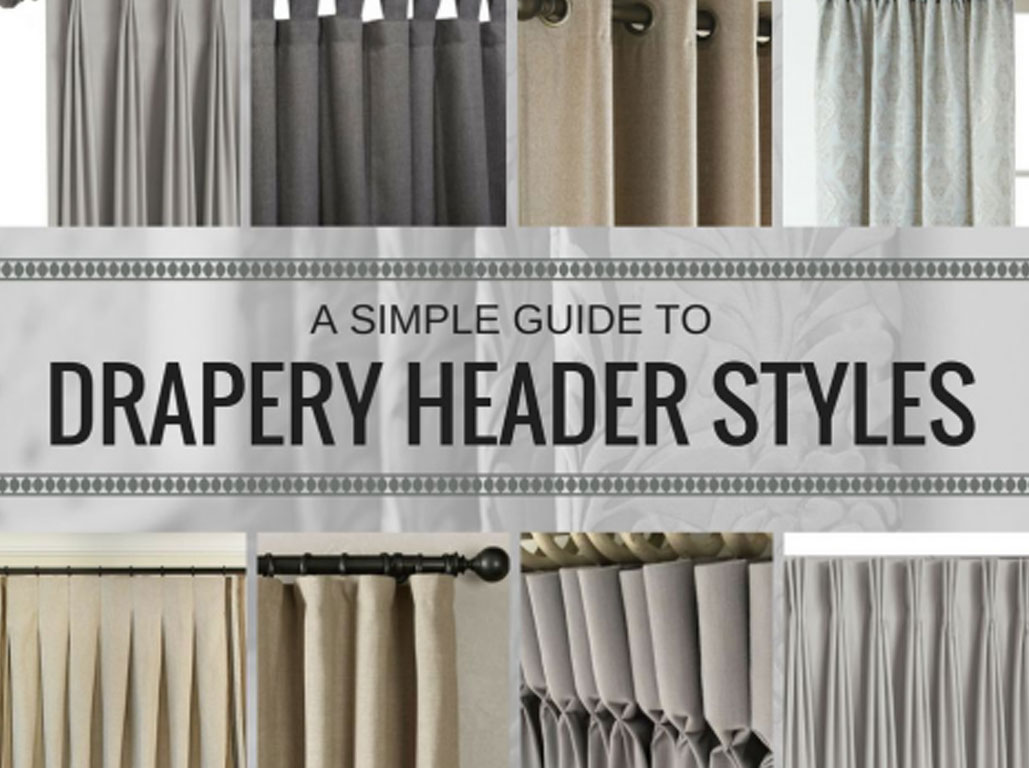
When it comes to drapery styles the most common question I ask is what type of “header” do you want on your draperies. The terminology used for the top header on a drapery can even leave a seasoned designer confused. So let’s unpack the terminology for the header of drapery.
The header of the drapery is the term used in regards to the top of the drapery. There are many different ways to treat the top of the drapery to achieve a certain look and function. Depending on the functionality of the drapery is what will help determine what type of header you will need.
If you are wanting draperies that can open and close it is best to pick a pleat style or to go with a ripple fold tape header. Below are some of the options to choose from when considering the top of your drapes.
1) Traditional Pleat is a 3 finger fold of fabric that is tacked at the bottom. This pleat has a pleat to space ratio that allows the fabric to fold in such a way to help with the stack back of drapery when opened. You can either pick 2.5 fullness for your draperies or 3 times full. The fullness you decide on determines the amount of fabric that is put into each pleat. The space between pleats is typically between no less than 3” and no more than 5”. The folds that make up the pleats typically require 6” for 3 finger (fold) drapes or 4” for 2 finger (fold) draperies. Typically on a 54” wide piece of fabric you will have five 3 finger pleats or seven 2 finger pleats. This information is necessary to remember when purchasing the rings to hang your draperies from.
2) A two finger tack bottom is a way to stretch your fabric just a bit. It is composed of 2 folds of fabric and then tacked at the bottom to hold the folds in place.
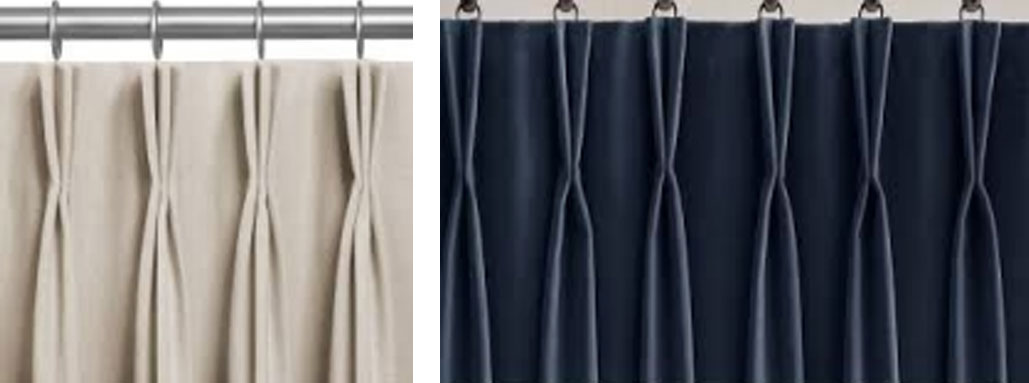
3) You can do the 3 or 2 finger pleat and tack at the top for a bit more of a contemporary look. Just remember it does not stack up as neatly as when pleats are tacked at the bottom.
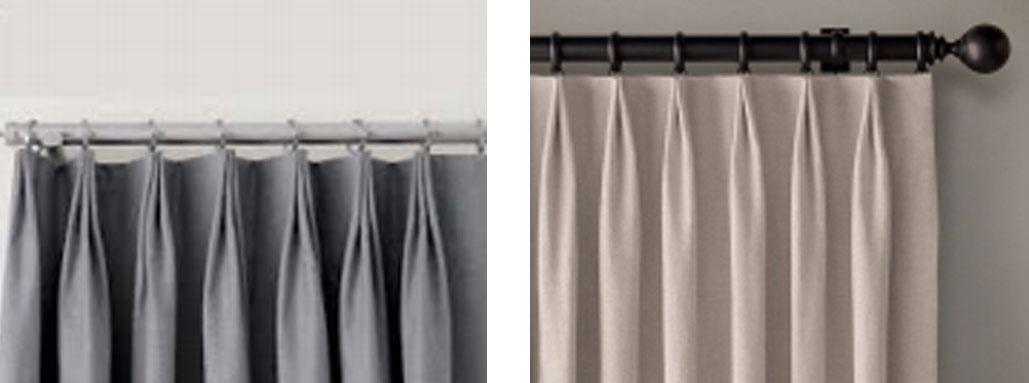
4) Inverted pleated drapes have the fabric folded to the back to give a softer look to the front. These make great stationary drapes but do not stack up very well for operable drapes.
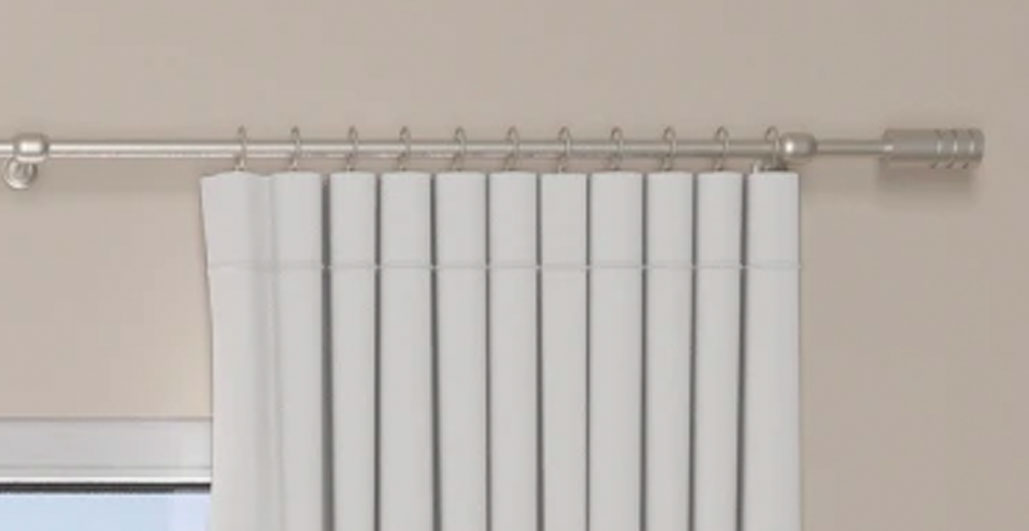
5) Goblet Pleat is a type of pleat that resembles a drinking goblet. Instead of folds it has a rounded appearance and tacked at the bottom. When fully open the rounded type pleat does not lend itself to stacking up efficiently, so it is better suited for side panels. When doing a goblet pleat we typically stuff the goblet with batting to help maintain that rounded look. The detail on the top of this drape is a flange that will add a custom touch to your drapers. Here it is done in a complimentary stripe but can also be done in a solid.
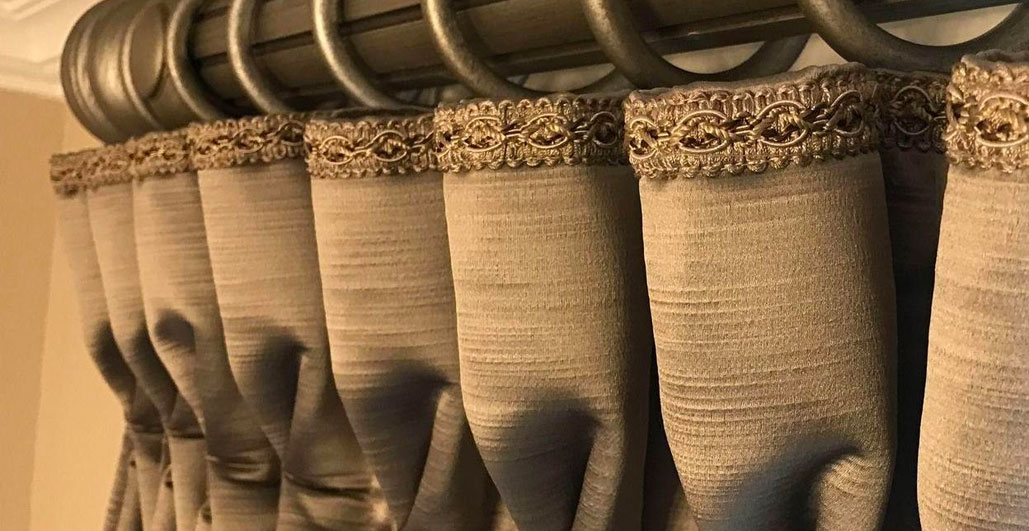
6) Grommet draperies are a great transitional or contemporary casual style. You can coordinate your grommet finish with other metals in the room. There are many different sizes of grommets and the size of grommet drives the price of the panels. The great thing about grommet drapes is that they do not require as much fabric as a traditional pleated drape does and they can slide across the rod to give privacy without using as much fabric. Be sure to think about the size of your pole and select the correct grommet size to have a pole slide through. Typically you match the color of the grommet to the color of your hardware. Note this type of drape is more labor-intensive and this is reflected in the overall cost. Remember it does take less fabric and does not require rings to hang from so it may balance out in cost, depending on the price of your fabric and the price of your hardware.
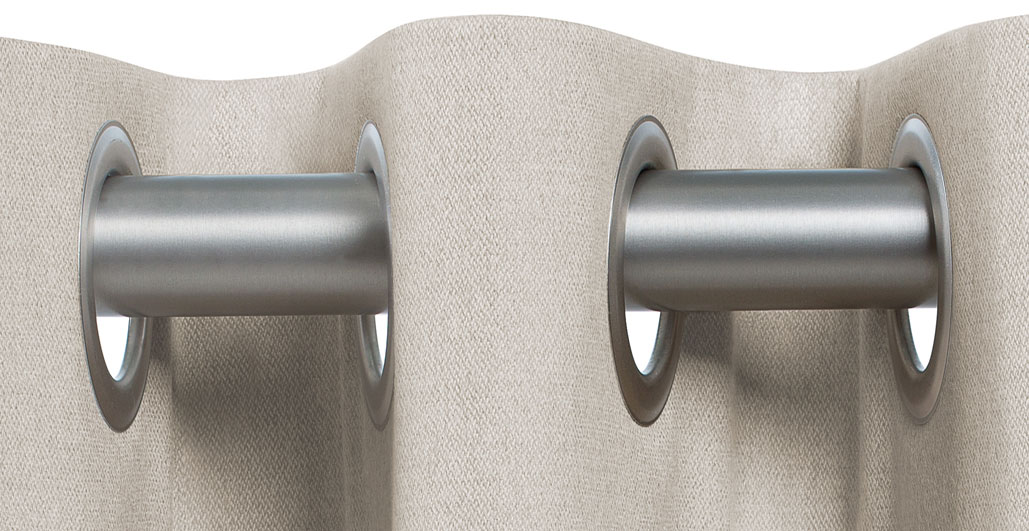
7) Tab top draperies are a much more casual look. They are better in a space where you want side panels and are not looking to open and close the drapes every day. They do not require as much fabric but are more labor-intensive and are more expensive. The fullness of the panel is determined by the width of the tab and the space between each tab. Another thing to remember is that the drape does not have the ability to stack back as tight as a grommet panel does because of the width of the tab. You can wrap the tap with a scrunchy of fabric to create a different bit more of a formal tab top drapery. This scrunch can either match the fabric or be a contrast.
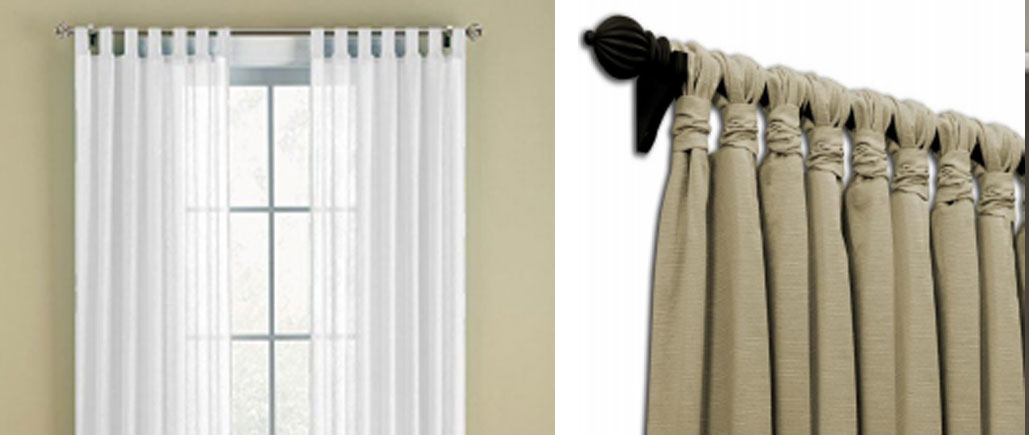
8) Ripple fold draperies are made with a tape running across the top of a flat panel. This tape has snaps that will allow you to snap the drapery onto a Ripple fold rod. The fabric flows back to front of the rod creating a rippled effect. You can adjust the fullness on a ripple fold drapery more so than you can adjust the fullness on a pleated drapery. When using a sheer fabric you may prefer the 120% fullness factor for privacy. 120% is the commonly recommended fullness for sheers. If the amount of stackback is important because of view or available space, you might want to consider the 60% fullness factor because you can cover more window space per “ripple”. For example, a 100” window will stack in 27” at 60% fullness as opposed to the 120% fullness which would stack in 36”. The fullness factor is determined by how many widths of fabric is used in the panel and how thick the fabric is. So when asking what is the stack back going to be on my drapery? Well, that is a tricky question and only a rough estimate can be given. Obviously more fabric, more labor, but more fullness. And with more fullness the bigger the stack back. ( how much space the drapery takes when fully opened).
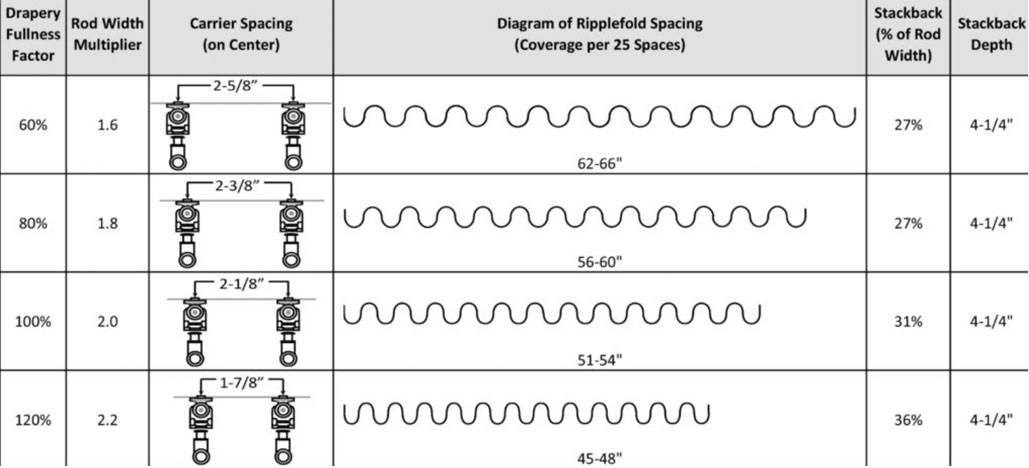
When specifying what type of draperies you are wanting it is imperative to understand the above terminology. Each type of drapery can have an effect on your pricing so be sure to understand and convey all the details to be able to be given an accurate quote. An inspirational photo is always helpful to both the client and the workroom in making sure everyone is on the same page. Serendipity Designs would love to help you decide what type of treatment is best for your space.





